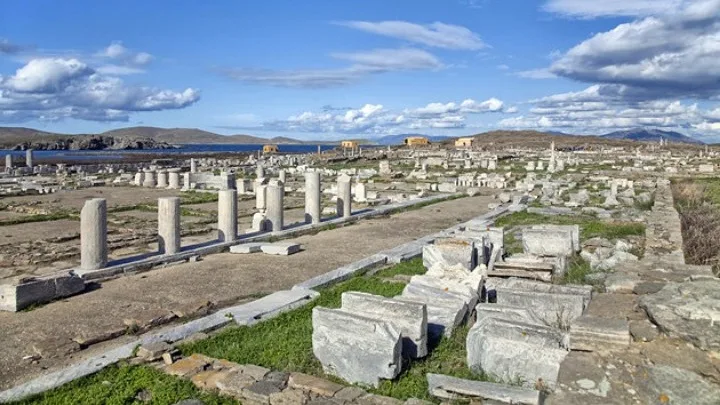Very close to Mykonos island lies Delos, a UNESCO heritage site and one of the most significant sanctuaries of the ancient Greek and Roman world.
Surrounded by azure waters, Delos’ 2,000-year-old ruins provide a glimpse into daily life during the Hellenistic and Roman periods. However, according to The Australian, scientists warn that rising sea levels due to climate change could sink this historic site within decades.
Significant structural damage is already visible, especially in areas that once housed trade and storage buildings in the first and second centuries BCE.
“Every year in the spring, I notice that new walls have collapsed,” Moretti, who has taken part in digs on the island for the past 40 years, told AFP.

In the past decade, sea levels around Delos have risen by up to 20 meters (66 feet) in some areas. A study by Aristotelio University in Thessaloniki found that rising temperatures and high humidity levels significantly affect the chemical composition of materials used in cultural heritage monuments. “Just like the human body, monuments are built to withstand specific temperatures,” Efstathia Tringa, a meteorology and climatology researcher at Aristotle University, told kathimerini earlier this year.
Tourists from Mykonos, who often stray from designated areas, pose another challenge. In summer, only a few archaeologists are present to supervise the site. Delos, considered the birthplace of Apollo and Artemis, was once a thriving city of about 30,000 people during the Roman era. However, it was looted twice in the first century BCE and eventually abandoned.
Source: The Australian
